Does BotFactory Hold The Key To Revolutionizing Tech Startups? [VIDEO]
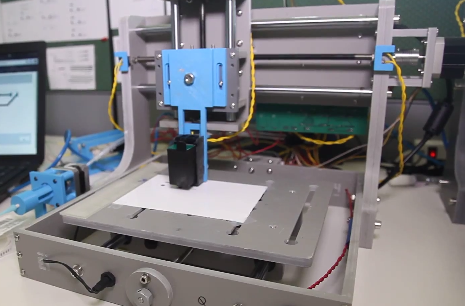
What if you could design an electronic device straight from your computer? BotFactory Inc., which makes a desktop printer that can assemble a circuit board in minutes, wants to revolutionize how startups create electronic products.
The startup's cofounders, Nicolas Vansnick and Carlos Ospina, spoke to International Business Times about their award-winning device, which they plan to showcase at Maker Faire in May 2014.
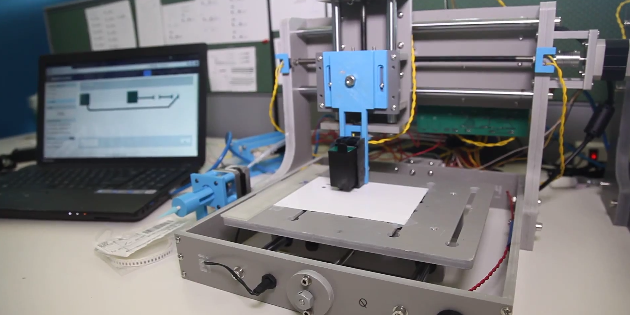
Who is BotFactory?
Vansnick and Ospina, along with BotFactory Treasurer Michael Knox, met at New York University Polytechnic School of Engineering and created BotFactory in 2013 to simplify how electronic prototypes are created.
“At BotFactory, we are trying to design an electronic circuit printer,” Vansnick told IBTimes. “The idea is to revolutionize the way you’re making circuit boards. Whether you’re making the new iPhone or making something for your house, we want you to have this machine sitting on your desk that would basically print conductive traces and then glue components directly onto the board. So you would have your board, and instead of waiting for weeks, you would only wait for a few hours.”
BotFactory won third place at the NYU School of Engineering Inno/Vention Competition, which challenges students to build prototypes and pitch commercially viable ideas for real-world problems.
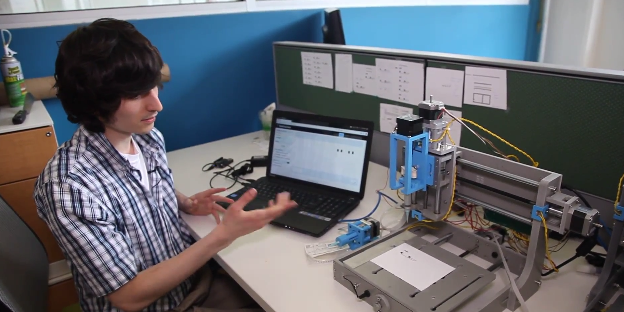
What BotFactory does and how it works
BotFactory’s goal is to reduce the amount of time and money that startups have to invest in building prototypes by providing technology and products for engineers to shorten their product development cycles, make their businesses more productive and efficient, and help them bring their products to market faster than before.
“At BotFactory, we are changing the way you design electronic circuits,” Ospina told IBTimes. “What we want is to change the process that takes 10 days into a process that takes 30 minutes, and you can print this from your desktop.”
The device can print conductive traces from a desktop computer using BotFactory’s simplified pick-and-place printed circuit board (PCB) system, which connects components in minutes without the need to silk-screen solder paste. The machine can print conductive traces from gerber files and other image formats, such as the .png and .jpg formats.
First, BotFactory prints the design, and then it uses a separate head for silver glue before it uses its pick-and-place system to assemble parts. The device can connect to a printer with a USB cable, an Ethernet connection or a wireless adaptor. The printers are accessible via a Web-based interface, to which users can drag-and-drop image files and watch as they are processed and printed.
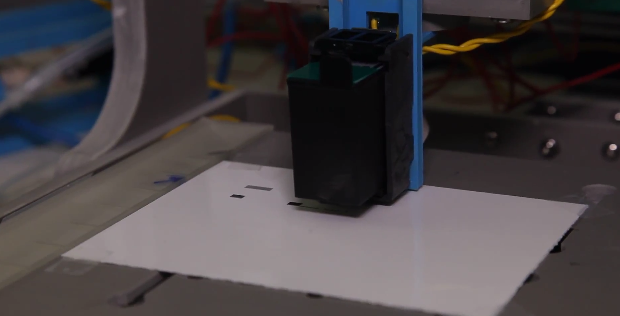
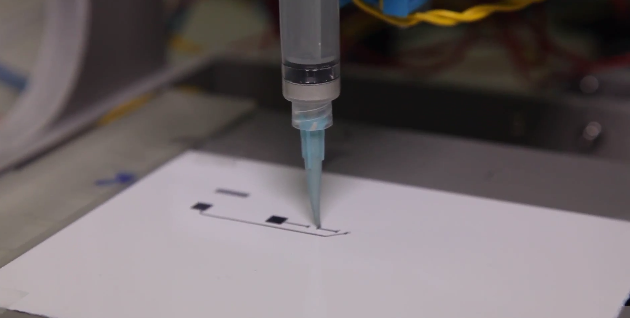
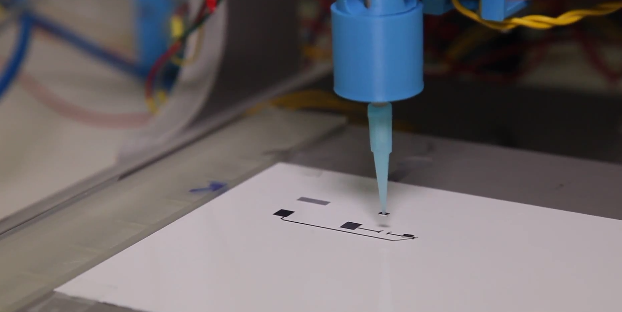
“You fire up your Web browser and go to a specific URL to access your printer,” BotFactory Front End-Engineer Andrew Ippoliti told IBTimes. “Then, from there, you can upload your design files, and then the printer will print them for you. Once you finish printing, gluing and placing all of your components, just give it some time and some heat to cure and you’ll have a working circuit.”
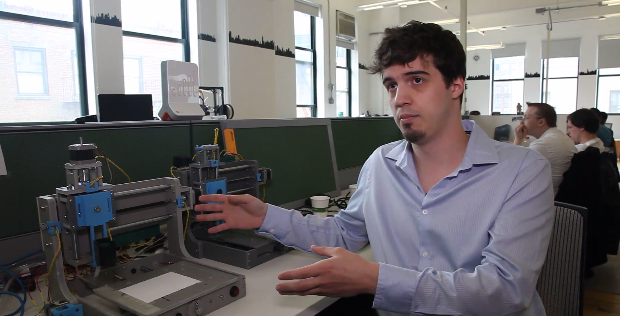
Why the startup was created
Vansnick and Ospina came up with the idea for BotFactory after designing a 3D circuit prototype during one of their classes at NYU.
“Actually, it’s a pretty cool story,” Vansnick said. “Carlos and I were in this class called Low Power Bio-electronics, where we had to design an EEG system. Just to design the boards took a couple of weeks, and we decided to order everything. It took 10 days to come back. By that time, some people realized they had made a mistake, so they had to reorder the boards, but they basically missed the deadline for the project because of that.”
The class had one semester to design, assemble and test a basic EEG system (a brainwave reader). Vansnick said that while the design of the EEG probes on paper took up a large part of the semester, the project leaders soon realized the most critical and frustrating part of the design process: circuit board fabrication. It took PCB manufacturers nearly seven to 10 days to fabricate and ship all of the boards to the students. The two cofounders said that ordering PCBs could cost anywhere from $150 to $300 or more, each, depending on how soon the circuit boards were needed, and what optimizations they required. Out of the eight teams in the course, only one managed to complete the project on time by the end of the semester.
That's when Vansnick and Ospina hit upon their idea for their startup: They wanted to create a device that would decrease the cost and time it takes to build prototypes.
“Carlos and I talked a bit, and we realized that there were 3D printers for mechanical engineers, so they could prototype really quickly, but there was nothing really for electrical engineers,” Vansnick said. “You always had to wait for so long, and you’re not really productive while you’re waiting. So we actually talked to a professor at the NYU School of Engineering, Michael Knox, and that’s where just the three of us started brainstorming and realized that we would create some sort of 3D printer that would basically be able to print circuit boards.”
Since graduating with their Master's degrees from NYU Polytechnic School of Engineering in 2013, Vansnick and Ospina have continued to pursue their goal of simplifying how electronic prototypes are created while striving to build a market around "Agile Electronics Development."
“This [BotFactory] will enable you to create devices from your desktop, fix problems, get to the right circuit, so you will hit the market faster, and [it] will make [you] probably more money ... and you will spend less creating this prototype,” Ospina said. “In the end you will be more productive, and we will revolutionize the way startups create products.”
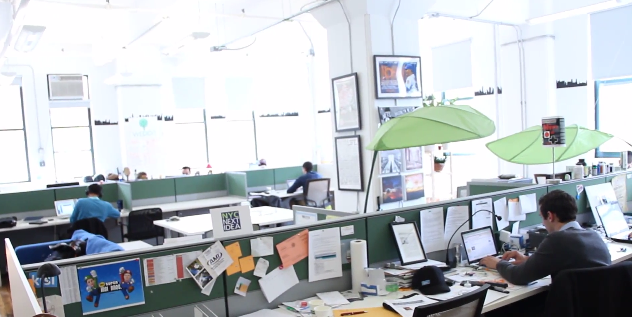
Where BotFactory perfects its products
Brooklyn has become a booming hub for technology startups in New York City. To meet growing demand in the area, NYU Polytechnic School of Engineering partnered with former New York City Mayor Michael Bloomberg, former Brooklyn Borough President Marty Markowitz, the New York City Economic Development Corporation (NYCEDC) and Two Trees Management to open the DUMBO incubator in 2012 to help provide startups like BotFactory with the resources, support and office space necessary to grow into successful ventures.
“The incubator has helped us a lot, first of all providing a space," Vansnick said. "Also, what I really love about incubators is that they put you in contact with people who are passionate about what they’re doing ... everyone is networking like crazy, which is a great boost for us.”
The NYU School of Engineering opened its first business incubator at its downtown Brooklyn campus in 2004. The school then opened Varick Street, a second incubator, in Manhattan, in 2009, along with NYC ACRE, an incubator that supports the efforts of clean-technology-focused companies.
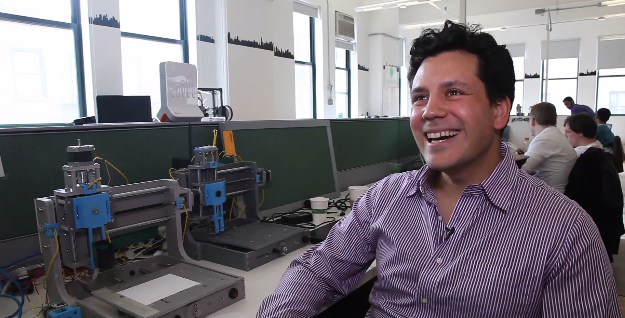
BotFactory's next step
The next step for BotFactory is to attend the Maker Faire Bay Area convention on May 17-18, 2014, where Vansnick and Ospina will showcase their perfected device.
“Any option is possible, really, at this point,” said Vansnick. “We’re really trying to as a technical challenge just make the technology work, and then, from there, whether someone wants to buy it, or if we can grow organically from there, everything would be really awesome for us.”
BotFactory’s goal is to eventually have 50 of these printers, which the startup estimates will cost about $2,500 each.
“We are working really hard on getting multilayering technology out,” Ospina added. “It’s kind of a secret, and we hope to unveil it very soon.”
© Copyright IBTimes 2024. All rights reserved.




















